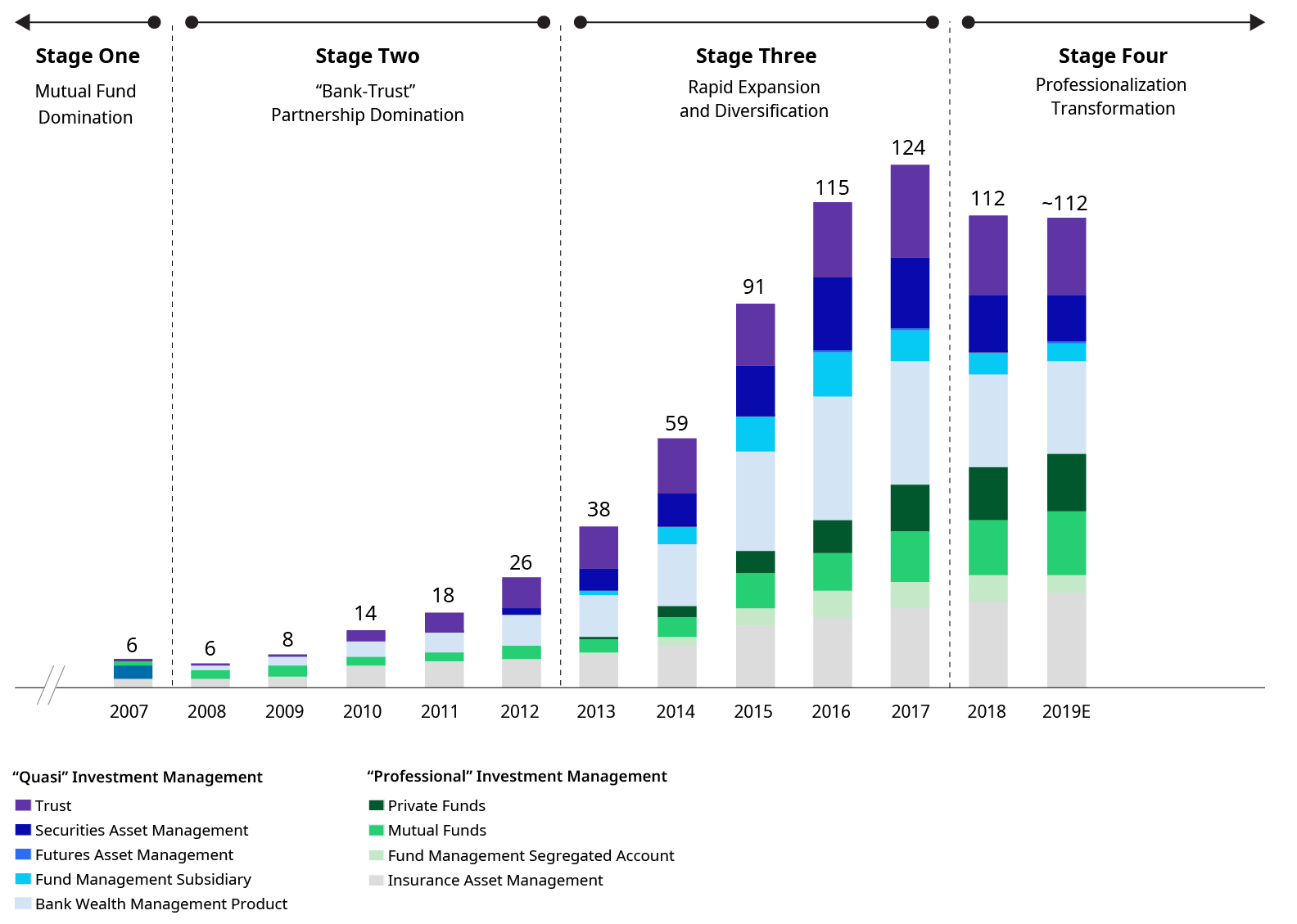This article first appeared in BRINK News on August 17, 2020 and is co-authored by Kai Keller, Initiative Lead at World Economic Forum.
China’s financial services industry is transforming at a rapid pace. Chinese policymakers have committed to opening domestic capital markets, which will create opportunities for Chinese individuals and investors, as well as domestic and global financial institutions.
Chinese individuals have historically saved more than any other nation, with the majority of savings ending up in bank deposits or housing investments. As China’s population continues to age — and economic growth continues to slow due to COVID-19 — it is critical that Chinese investors can access safe and sustainable investment options to plan for retirement and other major life expenditures in a sophisticated way.
This is where asset managers come in. Asset managers, who match savings and retirement money with investment opportunities, are particularly important in this transformation. Within the past decade, the industry’s total assets under management (AUM) have grown tenfold, reaching about 110 trillion renminbi (~$16 trillion) by the end of 2019.
The World Economic Forum, together with its knowledge-partner, Oliver Wyman, convened Chinese and global leaders from the financial industry, regulatory organizations, central banks and academia to explore how this transformation must be shaped to create a stable and accessible industry best positioned to contribute to economic growth and prosperity. We just published the findings in the report China Asset Management At an Inflection Point.
The Growing Role of Fintech
We learned that evolving regulation and the overhaul of China’s pension system will impact the direction of industry development. But there is an additional, sometimes less-understood dynamic in play: the role of financial technology in China.
Fintech will fundamentally reshape how customers interact with financial institutions and how financial institutions create new sources of differentiation. As just one example, innovations in selling investment products, such as Yu’e Bao — using funds deposited in Alipay e-wallet to invest in money market funds — is unheard of outside of China. But since emerging in 2013, it is now managing trillions of investors’ funds.
Here’s how we got here — and where fintech will lead the industry.

Source: Asset Management Association of China (AMAC), China Banking and Insurance Regulatory Commission (CBIRC), and China Securities Regulatory Commission (CSRC), China Trust Association (CTA), WIND, Oliver Wyman Analysis; Total assets under management of China’s asset management industry (RMB trillion)
What Happened in the Past?
Historically, the industry has been fixated on selling the most profitable products rather than necessarily the best products for customers.
This worked well in the past as investments are practically “implicitly guaranteed” by asset managers. Institutions guarantee a certain return regardless of performance, and customers pocket 10%+ yield without much deliberation on suitability.
As the macroeconomy continues to slow and investment yield continues to decline, however, the “product push” model is no longer sustainable.
What’s Next?
Far-sighted fintechs anticipated the change and proactively managed the transition.
As an example, players are increasingly moving away from “cold data,” such as customer demographic surveys, to “hot data,” which are continuously generated from every single customer touch point. This facilitates better matches between customers and products and delivers personalized solutions (e.g., robo-advisory). Some providers go one step further with “know your intention” (KYI), to get an intimate understanding of how customers are making decisions.
Chinese policymakers have also been actively pushing for “customer centricity.” One example is a mutual fund advisory pilot program that encouraged the industry to tailor investment options to customers’ financial goals. A joint venture between Ant Financial and Vanguard has rolled out robo-advisory offerings since April 2020.
While the timing of profitability is uncertain, this is a long-term game, and players are competing to capture the “lifetime” share of customers’ wallets. More importantly, this will ensure customers are investing in the most suitable products and accumulating wealth — which will be ever more important as the Chinese population continues to age and the pension system remains severely underfunded.
Accelerating the Transformation
Despite the industry’s impressive growth and positive outlook, fintechs need to resolve a few challenges to unleash their full potential. The most pertinent include the following:
Lack of customer education. Chinese individuals generally have a poor understanding of asset allocation. The industry must play a greater role in educating customers to better understand their risk appetite and select the products best aligned with their long-term investment goals. This process requires combining digital solutions with human interaction to uncover potential blind spots that are not fully captured by data alone, enabling institutions to develop more personalized investment offerings.
Consolidating customer data across entities. Effective asset allocation requires a holistic view of customers’ financials across multiple financial providers. Only with a complete view can asset managers construct and re-balance investment portfolios based on evolving customer needs. Robo-advisory platforms developed overseas can now aggregate data from various financial institutions such as banks and brokerages. Similar efforts will run into challenges in China given the current segregation of financial institutions. Industry and policymakers need to work together to better understand potential data-sharing risks and how to mitigate them.
Data and technology are increasingly important in shaping access to and interaction with financial products. The ability of Chinese service providers to leverage technology to help small businesses and individuals access loans and digital services during the COVID-19 emergency demonstrated the importance of digital finance.
As the asset management industry is helping to ensure that individuals in China have sufficient financial resources to retire, pay for their children’s education or cover unexpected expenses, it is critical the industry continues to embrace technology. If it does so responsibly, and if it carefully guards against misuse or abuse, China’s asset management industry and financial system will continue to transform rapidly — and convey valuable lessons to other countries just beginning to embrace digital finance.







